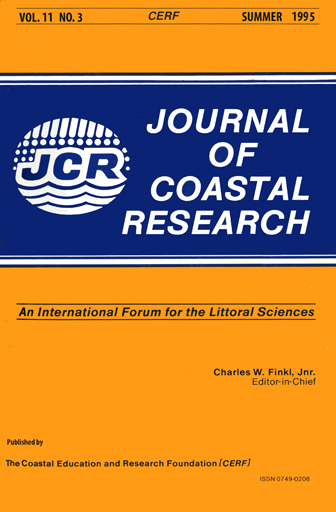A Discussion of the Generalized Model for Simulating Shoreline Change (GENESIS)
Keywords:
Sediment transport, shoreline erosion, shoreface, mathematical models.Abstract
The Generalized Model for Simulating Shoreline Change (GENESIS) (HANSON and KRAUS, 1989) is designed to simulate the long-term shoreline changes at coastal engineering sites resulting from spatial and temporal differences in longshore sediment transport. GENESIS is used by the coastal engineering and planning communities for predicting the behavior of shorelines in response to coastal engineering and/or beach replenishment activities that may alter longshore transport. GENESIS is also used by some modelers to develop regional scale sediment budgets. We have evaluated the assumptions behind the GENESIS model in light of well understood nearshore, geologic and oceanographic phenomena. In most cases, the assumptions used in the model fail to be met or are so oversimplified that the model's effectiveness as a predictive tool is limited at best.
In addition, the GENESIS Technical Reference (HANSON and KRAUS, 1989) makes it clear that adequate data for running the model are seldom, if ever, available. Frequently, averaged values must be used, smoothing over great potential variability in data sets (waves, profile shape, etc.). When predictions are made, it is not possible to quantify the uncertainty in the assumptions or the error in the data, and thus it is not possible to quantify the uncertainty in predicted results. GENESIS does not provide the modeler with statistical answers. The best the modeler can do is to vary the input parameters to produce a range of possible scenarios. There is no way to objectively evaluate which scenario is the most reasonable. As the Technical Reference emphasizes, even with GENESIS the user must still constantly rely on his or her own technical expertise. All of this uncertainty makes GENESIS, at best, a qualitative not quantitative model, and at worst a model that, after a certain amount of assuming and adjusting input parameters, produces a result that the coastal "expert" employing its services expected - - a way of backing up one 's judgment with what appear to be real numbers. We believe that future modeling efforts need to focus on statistical models where each parameter input into the model is accompanied by probabilities of its accuracy and predictive capabilities, producing probabilistic results.


